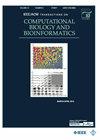Vina-GPU 2.1: Towards Further Optimizing Docking Speed and Precision of AutoDock Vina and Its Derivatives
IF 3.4
3区 生物学
Q2 BIOCHEMICAL RESEARCH METHODS
IEEE/ACM Transactions on Computational Biology and Bioinformatics
Pub Date : 2024-09-25
DOI:10.1109/TCBB.2024.3467127
引用次数: 0
Abstract
AutoDock Vina and its derivatives have established themselves as a prevailing pipeline for virtual screening in contemporary drug discovery. Our Vina-GPU method leverages the parallel computing power of GPUs to accelerate AutoDock Vina, and Vina-GPU 2.0 further enhances the speed of AutoDock Vina and its derivatives. Given the prevalence of large virtual screens in modern drug discovery, the improvement of speed and accuracy in virtual screening has become a longstanding challenge. In this study, we propose Vina-GPU 2.1, aimed at enhancing the docking speed and precision of AutoDock Vina and its derivatives through the integration of novel algorithms to facilitate improved docking and virtual screening outcomes. Building upon the foundations laid by Vina-GPU 2.0, we introduce a novel algorithm, namely Reduced Iteration and Low Complexity BFGS (RILC-BFGS), designed to expedite the most time-consuming operation. Additionally, we implement grid cache optimization to further enhance the docking speed. Furthermore, we employ optimal strategies to individually optimize the structures of ligands, receptors, and binding pockets, thereby enhancing the docking precision. To assess the performance of Vina-GPU 2.1, we conduct extensive virtual screening experiments on three prominent targets, utilizing two fundamental compound libraries and seven docking tools. Our results demonstrate that Vina-GPU 2.1 achieves an average 4.97-fold acceleration in docking speed and an average 342% improvement in EF1% compared to Vina-GPU 2.0.Vina-GPU 2.1:进一步优化 AutoDock Vina 及其衍生产品的对接速度和精度。
AutoDock Vina 及其衍生产品已成为当代药物发现领域虚拟筛选的主流管道。我们的 Vina-GPU 方法利用 GPU 的并行计算能力来加速 AutoDock Vina,Vina-GPU 2.0 进一步提高了 AutoDock Vina 及其衍生产品的速度。鉴于大型虚拟筛选在现代药物发现中的普遍存在,如何提高虚拟筛选的速度和准确性已成为一项长期挑战。在本研究中,我们提出了 Vina-GPU 2.1,旨在通过集成新算法提高 AutoDock Vina 及其衍生产品的对接速度和精度,从而促进对接和虚拟筛选结果的改进。在 Vina-GPU 2.0 的基础上,我们引入了一种新算法,即减少迭代和低复杂度 BFGS(RILC-BFGS),旨在加快最耗时的操作。此外,我们还实施了网格缓存优化,以进一步提高对接速度。此外,我们还采用优化策略来单独优化配体、受体和结合口袋的结构,从而提高对接精度。为了评估 Vina-GPU 2.1 的性能,我们利用两个基本化合物库和七个对接工具对三个主要靶点进行了广泛的虚拟筛选实验。结果表明,与 Vina-GPU 2.0 相比,Vina-GPU 2.1 的对接速度平均提高了 4.97 倍,EF1% 平均提高了 342%。Vina-GPU 2.1 的源代码和工具免费提供,并附有全面的说明和示例。
本文章由计算机程序翻译,如有差异,请以英文原文为准。
求助全文
约1分钟内获得全文
求助全文
来源期刊
CiteScore
7.50
自引率
6.70%
发文量
479
审稿时长
3 months
期刊介绍:
IEEE/ACM Transactions on Computational Biology and Bioinformatics emphasizes the algorithmic, mathematical, statistical and computational methods that are central in bioinformatics and computational biology; the development and testing of effective computer programs in bioinformatics; the development of biological databases; and important biological results that are obtained from the use of these methods, programs and databases; the emerging field of Systems Biology, where many forms of data are used to create a computer-based model of a complex biological system

 求助内容:
求助内容: 应助结果提醒方式:
应助结果提醒方式:


